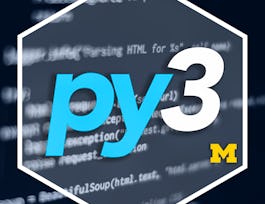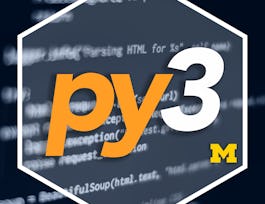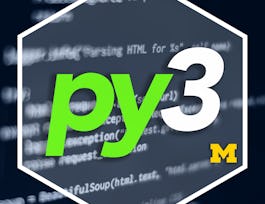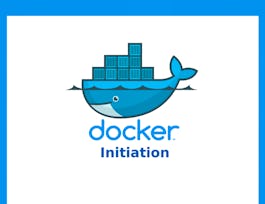This course will walk you through a hands-on project suitable for a portfolio. You will be introduced to third-party APIs and will be shown how to manipulate images using the Python imaging library (pillow), how to apply optical character recognition to images to recognize text (tesseract and py-tesseract), and how to identify faces in images using the popular opencv library. By the end of the course you will have worked with three different libraries available for Python 3 to create a real-world data-analysis project.


Python Project: pillow, tesseract, and opencv
This course is part of Python 3 Programming Specialization
Taught in English
Some content may not be translated

Instructor: Christopher Brooks
70,436 already enrolled
Included with 
Course
(1,924 reviews)
84%
What you'll learn
How to inspect and understand APIs and third party libraries to be used with Python 3
How to apply the Python imaging library (pillow) to open, view, and manipulate images, including cropping, resizing, recoloring, and overlaying text
How to apply the python tesseract (py-tesseract) library with Python 3 in order to detect text in images through optical character recognition (OCR)
How to apply the open source computer vision library (opencv) to detect faces in images, & how to crop and manipulate these faces into contact sheets
Skills you'll gain
Details to know

Add to your LinkedIn profile
Course
(1,924 reviews)
84%
See how employees at top companies are mastering in-demand skills

Build your subject-matter expertise
- Learn new concepts from industry experts
- Gain a foundational understanding of a subject or tool
- Develop job-relevant skills with hands-on projects
- Earn a shareable career certificate


Earn a career certificate
Add this credential to your LinkedIn profile, resume, or CV
Share it on social media and in your performance review

There are 3 modules in this course
What's included
10 videos2 readings1 peer review2 ungraded labs
What's included
6 videos1 ungraded lab
What's included
4 videos6 readings1 peer review2 ungraded labs
Instructor

Offered by
Recommended if you're interested in Software Development

University of Michigan

University of Michigan

University of Michigan

Coursera Project Network
Prepare for a degree
Taking this course by University of Michigan may provide you with a preview of the topics, materials and instructors in a related degree program which can help you decide if the topic or university is right for you.
Why people choose Coursera for their career




Learner reviews
Showing 3 of 1924
1,924 reviews
- 5 stars
53.95%
- 4 stars
18.13%
- 3 stars
10.23%
- 2 stars
6.96%
- 1 star
10.70%
New to Software Development? Start here.

Open new doors with Coursera Plus
Unlimited access to 7,000+ world-class courses, hands-on projects, and job-ready certificate programs - all included in your subscription
Advance your career with an online degree
Earn a degree from world-class universities - 100% online
Join over 3,400 global companies that choose Coursera for Business
Upskill your employees to excel in the digital economy
Frequently asked questions
Access to lectures and assignments depends on your type of enrollment. If you take a course in audit mode, you will be able to see most course materials for free. To access graded assignments and to earn a Certificate, you will need to purchase the Certificate experience, during or after your audit. If you don't see the audit option:
The course may not offer an audit option. You can try a Free Trial instead, or apply for Financial Aid.
The course may offer 'Full Course, No Certificate' instead. This option lets you see all course materials, submit required assessments, and get a final grade. This also means that you will not be able to purchase a Certificate experience.
When you enroll in the course, you get access to all of the courses in the Specialization, and you earn a certificate when you complete the work. Your electronic Certificate will be added to your Accomplishments page - from there, you can print your Certificate or add it to your LinkedIn profile. If you only want to read and view the course content, you can audit the course for free.
If you subscribed, you get a 7-day free trial during which you can cancel at no penalty. After that, we don’t give refunds, but you can cancel your subscription at any time. See our full refund policy.

